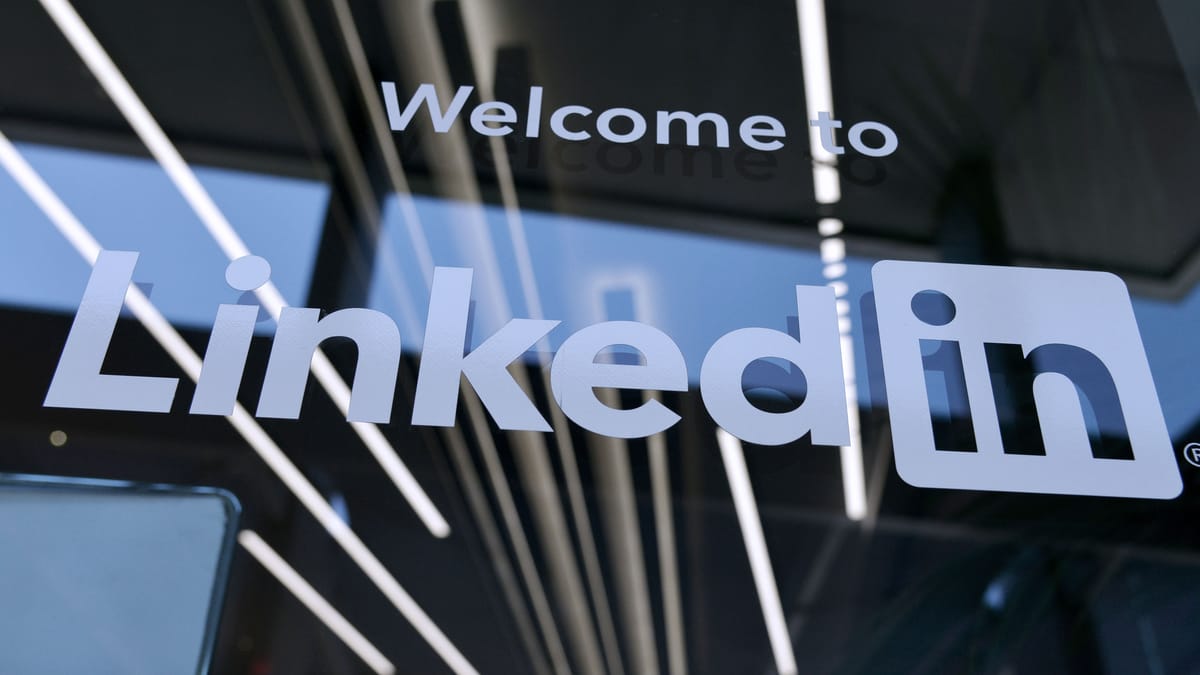Playbook: How to Write Your Executive LinkedIn Profile
Your LinkedIn profile can open doors you didn't know existed, but it requires precision and intentionality. Here's how to do it.

Your LinkedIn profile is public. Unlike your resume, which is tailored for a specific role and person, LinkedIn is visible to everyone - decision-makers, headhunters, peers, competitors, investors and clients.
This visibility is both an opportunity and a risk.
With a resume, you're targeting the hiring leader’s exact needs. That creates true alignment. On LinkedIn, you don’t have that luxury. You don’t know who is looking at your profile or why, or what challenges they're trying to solve.
However, the opportunity lies in LinkedIn's reach. The audience is huge, and despite the deluge of gurus, grifters and self-proclaimed thought leaders that occupy large swathes of the feed, a strong profile can connect you to people and opportunities in a way that other platforms can't.
Writing for an unknown audience requires balance. Your profile needs to present a cohesive narrative that aligns with your value proposition without trapping you in a narrow box.
Like with your resume, you cannot be all things to all people — a LinkedIn profile that says too much ends up saying nothing at all. Worse, it undermines your credibility.
The key is to be strategically broad. Fundamentally, less is more.
The true goal of your profile is to spark a conversation. You give enough to pique interest, but leave room for deeper discussions where you can cherry-pick what you want to say based on the context of your audience, be that in conversations with decision-makers, during interviews or through the content that you post.
With that in mind, let's get into the weeds.
Profile Content
Headline
Keep it simple - stick to your job title and company.
Your headline appears under your name when you comment on posts, so it’s a gateway to your profile. Your job title at the executive level carries more weight than a fluffy headline. Headlines that say a lot but mean absolutely nothing just add confusion. Terms like 'visionary' are nauseating.
Profile Picture
Choose a professional, approachable photo that communicates leadership and confidence. Make sure the image is high-quality and formal enough to reflect your status and industry norms. Yes, appearances do matter.
Banner Image
This is typically used by sales-folk to peddle whatever they are selling. As an executive, you don’t need a banner image. Keep it simple. Either don’t have one, or have something basic like an image of the city you live in. It really doesn’t matter.
'About' Section
People tend to overthink and overdo this section. You get a couple of lines before a user has to click ‘...see more’. Attention spans are short. People won’t bother reading a novel, so brevity is key.
Refer back to your value proposition and use that in the context of how you want to be perceived.
For example:
Early-stage SaaS sales leader with 15+ years of experience driving double-digit revenue growth. Successfully scaled two early-stage SaaS platforms from $1M to $20M+ ARR.
Consider the metrics and terms you use and how they might pigeon-hole you. If you know you only want to focus on a particular industry, type of company etc., then you can narrow it down.
'Experience' Section
There are a few important points to consider here. Remember, it's not you resume, so should not be treated as such. Be strategic in what you share.
- Most Recent Experience: Your most recent job title and company impacts how you’re found on LinkedIn. Headhunters/recruiters will typically search using the ‘current job title’ filter in LinkedIn Recruiter. This means that If you have an advisory position, board role or anything other than your ‘actual’ current job, you won’t show up in that search. Always put your actual current title as your ‘current’ most recent position.
- Career Path: You want to show a clear path. If you have outlier roles that aren’t related to how you want to be perceived, you might consider reducing them to their broadest form, so Director rather than Director - Procurement. Likewise, you also don’t need to list every last position from your early career. If only the last ten years are relevant, cut off the rest.
- Roles and experience: As we’ve discussed, being strategically broad is key. In its simplest form, that means just listing job titles with no extra detail. Based on your objectives, you may want to add a bit of detail where relevant, but avoid using metrics that could limit your opportunities.
Example: Leading revenue growth across all GTM motions worldwide.
It’s clear and concise, and doesn’t box in any particular channels or territories.
Education
Listing your education can add value if you happen to have gone to a particularly prestigious institution, or if your qualification is relevant to your industry — Engineering, an MBA, etc.
Otherwise, people typically don’t care. Listing every banal qualification or online course adds nothing.
Skills
Skills do matter, as they can impact how you’re found in searches. Include only relevant skills or keywords that are likely to be in a headhunter’s search criteria for your particular niche.
'Featured' Section
LinkedIn allows you to add a ‘featured’ section, which can include links. You might consider using these strategically to link to any thought leadership pieces you’ve written, press articles you feature in or anything else that is relevant to your narrative.
Does Having a Lean Profile Mean Headhunters Won’t Find Me?
Headhunters and recruiters search based on the criteria their client has given them.
This typically means searching for candidates at similar or competing companies who have a particular job title, or by searching for specific keywords.
So, you’ll still show up in searches if your company and job title is relevant to their search, regardless of how lean your content is. Including relevant keywords/skills will increase odds in situations where they are searching for a particular specialism.
As a headhunter, I still call candidates who at at my target companies at the level I'm looking for even if they have the most basic of profiles.
The point is, I can't discount them until I’ve spoken to them, at which point they then have complete control over the information they share that would be relevant to my client. Which is entirely the goal of your profile—spark a call, then control your narrative.
The Bottom Line
Being strategically broad and having a ‘less is more’ approach is key to controlling your narrative and how you are perceived.
- Brevity works: Keep your LinkedIn profile lean, sharing just enough to pique interest.
- Control your narrative in real time: Use live conversations to adapt your messaging.
- Your LinkedIn profile is a gateway: The goal of your LinkedIn profile is to help you land a meeting or call, where you can tailor your message live based on context. That’s where the real work is done.





